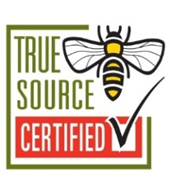Certificates
QUALITY CONTROL
GMP (good manufacturing practices): the GMP manual aims to describe the conditions and procedures adopted by Casa Apis to meet quality requirements related to the production conditions, including location, design, layout, and structure of buildings, facilities and rooms and equipment.
It also lays down the conditions of water supply, air quality and ventilation, lighting, availability for personal hygiene, toilets and cleaning facilities.
PAC (Self-control): are programs developed, deployed, maintained and monitored by the company, in order to ensure the quality of hygienic products. Involves maintenance of equipment installations, ventilation, lighting, personal hygiene and health of employees, cleaning and sanitizing, among others.
PPRA (environmental risk prevention program) : is responsible for the actions concerning the safety and industrial hygiene, taking into account the anticipation, recognition, evaluation and control of risks in the workplace and which may endanger the health and well-being of workers, fulfilling the requirements of the current legislation.
PCMSO (occupational health medical control): aims to promote the health of its workers taking into consideration the issues of incidents on the individual and the collective basis of employees of the company, taking the clinical epidemiological approach of relationship between health and work, keeping a character of prevention, early detection and tracking of work-related health hazards.
HACCP (hazard analysis and critical control points): is an international program that aims to ensure the safety of the product, by means of the controlling the processing of honey since its receiving at the warehouse until the final product. It contains the description of the food safety team, flowchart of activities, description of the stages of the process and the analysis of hazards and critical points of the process.
The HACCP is a global tool developed between the late 50 's and early 60, by a partnership between the NASA (National Aeronautics and Space Administration) and the American food company Pillsbury. From that time on, HACCP went through a long evolution to the current years, where he became the major tool of reference on analysis, establishment and management and control of hazards in the food production chain.
HARPC (Hazard Analysis and Risk-Based Preventive Controls): is the hazard analysis and risk-based prevention measures handbook based on international standards of the FDA (Food and Drug Administration), the US Department of agriculture, which aims to get an increasingly tight control over food safety.
HARPC does not have the same extent as HACCP and has basic differences, despite having a similar conceptual basis. It was incorporated by the FDA as part of the requirements of the law of the FSMA (Food Safety Modernization Act), created on 04 January 2011, by President Obama, whose goal is to ensure the quality and safety of food supplied to the United States.




